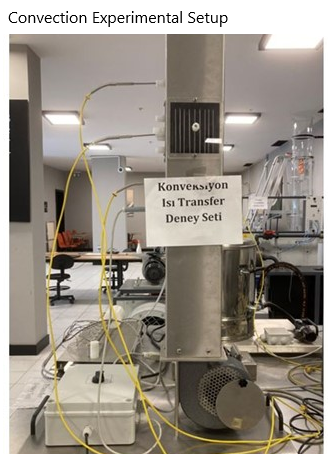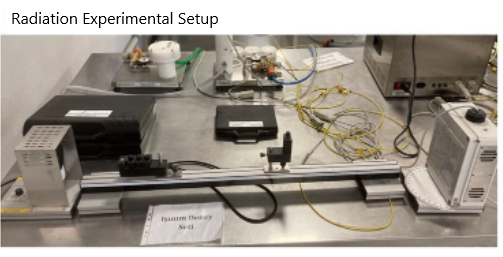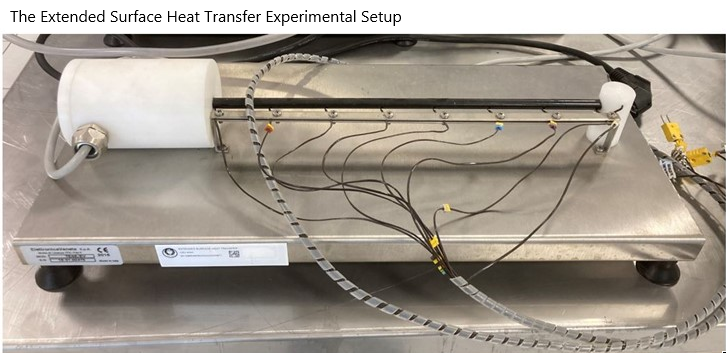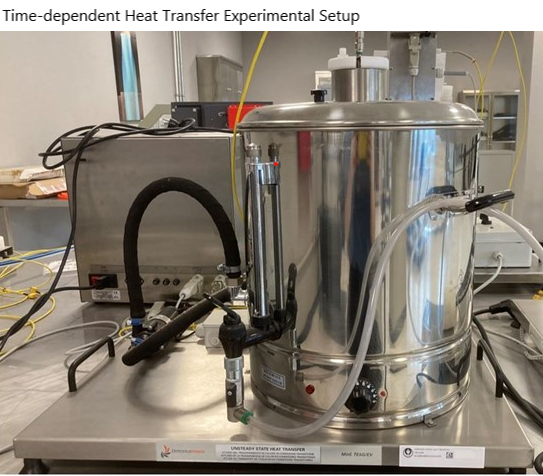In the wind tunnel, there are facilities such as vibration experiment setups, fluid mechanics and heat transfer experiment sets, measurement and evaluation experiment sets, oscilloscope, signal generators, and power supply sets. It is a laboratory used in compulsory courses such as Fluid Mechanics, Heat Transfer, Experimental Engineering, and elective courses such as Introduction to Aviation. The experimental setups are briefly mentioned below.
1) Flow Test Set in Pipes
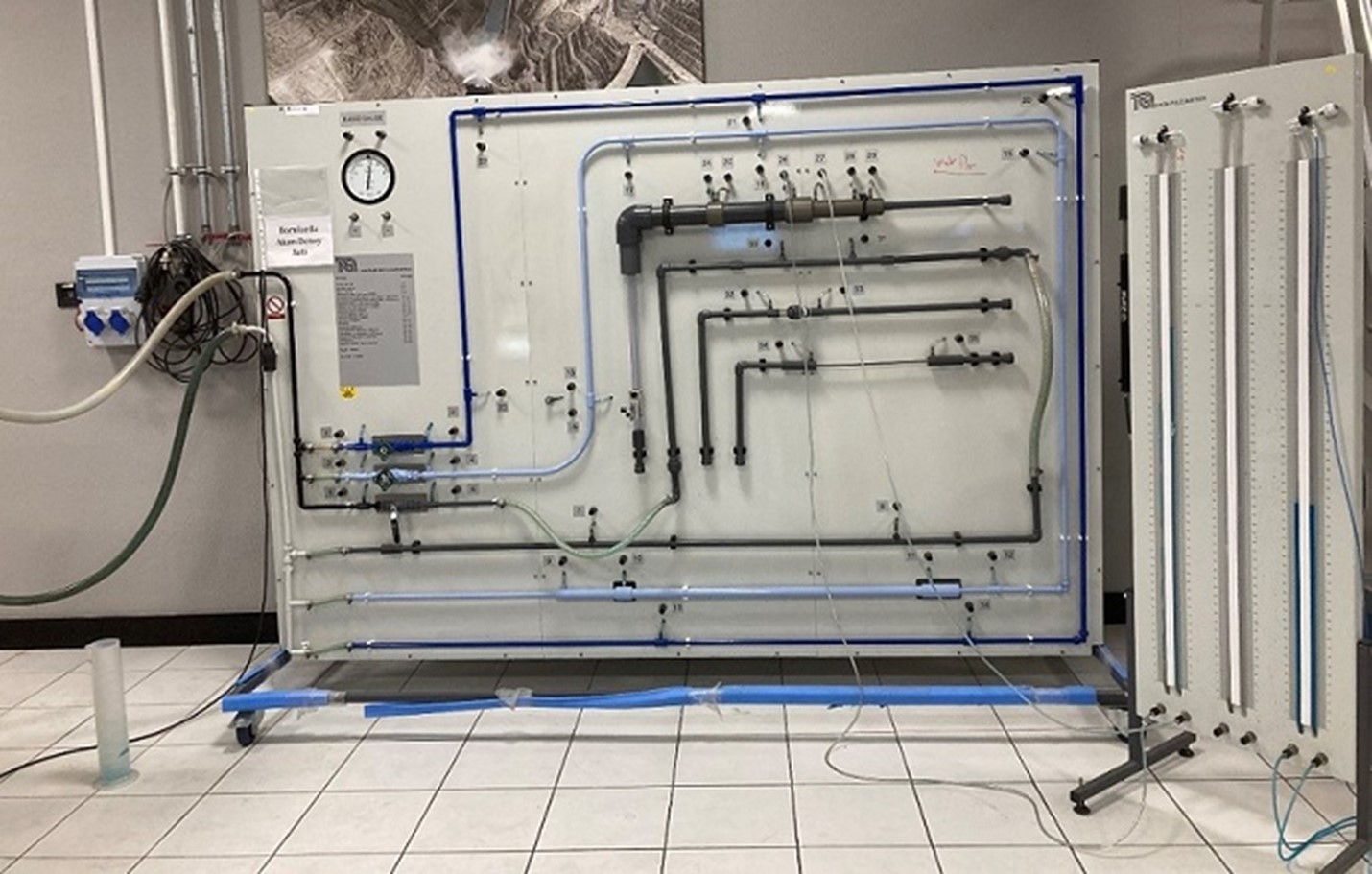
There are many different modules inside the pipe flow test set in which the internal flow is tested. A few of these modules are described below:
- Measuring the loss of different valve types (gate valve, ball valve, disk valve)
- Measuring the losses that may occur on rough and smooth surfaces
- Determining the flow rate of the flow with different measuring devices (Orifismeter, Venturimeter, Pitot tube)
- Measuring the loss caused by pipe bends with different geometries
These experimental devices are used within the scope of the ME 302 – Experimental Engineering course.
2) Pump Experimental Setup

These devices are used in the ME-302 Experimental Engineering course, two centrifugal pumps operating at constant power can be operated in series and parallel configurations. In this way, the effect of different configurations and changing flow rates on the system is examined. With the help of this device, students have a practical understanding of the working principles of pump systems.
3) Wind Tunnel
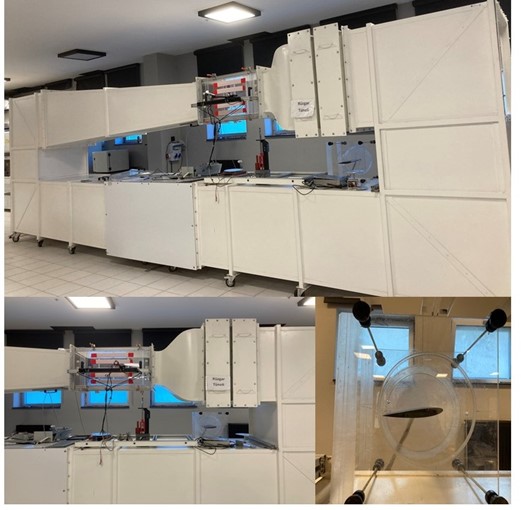
The fan located in the closed wind tunnel, which operates at low speeds, provides airflow and helps regulate the flow rate. in addition, the contraction and diffuser section of the assembly is designed to provide a uniform flow. In this tunnel, where force values can be found by measuring the pressure distribution on the surface or using a load cell sensor, different physical phenomena based on the external flow (drag crisis, stall, etc.) can be studied. It is intended that this tunnel will be used in the course ME 453 – Introduction to Aviation.
4) Heat Transfer Experiments
As taught in the heat transfer course, there are three different ways of passing heat: conduction, convection, and radiation. The experimental setups shown in the photographs allow these different heat transfer pathways to be studied. In time-dependent or non-time-dependent situations, the effect of the corresponding parameters on heat transfer is observed practically by students. First, the heat conduction experimental apparatus studies Fourier's Law in both polar and cartesian coordinate systems. The experimental setup, which deals with heat transfer by convection, which is another transmission route, examines both natural and forced convection types and their applications. For example, natural convection is observed in the vertical and horizontal planes with the help of this device. In addition, heat transfer by natural convection on Finnish surfaces or, in other words, on expanded surfaces is being studied in a separate experimental setup. The mechanism of heat transfer by radiation, on the other hand, studies the parameters in the Stefan-Boltzmann Law. These experimental devices are used in the courses ME 302 – Experimental Engineering and ME 362 - Heat Transfer.

